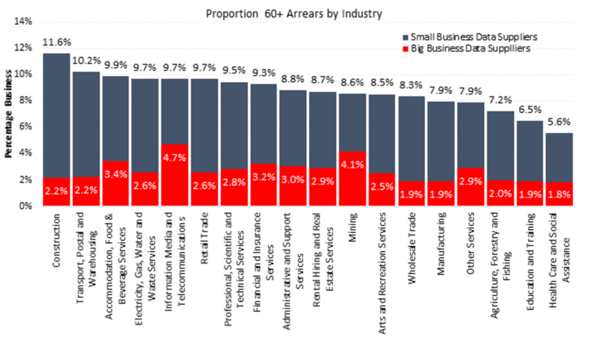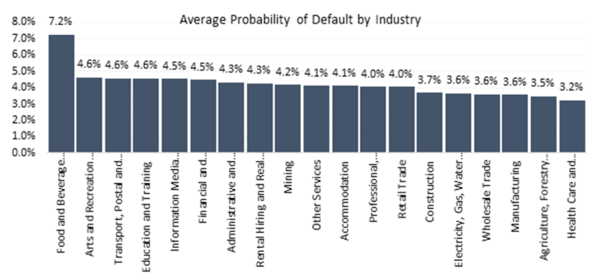Small businesses continue to be the biggest victims of late payers, according to the latest CreditorWatch data, which indicates that late payments for smaller firms are three times that of larger businesses.
According to the October 2022 CreditorWatch Business Risk Index (BRI), small businesses are feeling the squeeze of current economic pressures, while big businesses are faring much better. This reflects small businesses’ need for help enforcing payment terms and collecting past-due payments.
By the numbers
While payment defaults have risen at a rate of 20 per cent per month over the past year, trade receivables for small businesses have decreased 18 per cent in the past month to their lowest levels since October of the previous year. In contrast, the fall in trade turnover has not been as severe for large corporations.

From FY21 to FY22, big business revenue increased by 14 per cent for all publicly traded businesses and ASIC reporting organisations. Despite lower margins, profits increased by 9 per cent.
Meanwhile, the report notes that court actions have decreased 26 per cent since last month but are still up 50 per cent year-on-year.
Out of all the regions with more than 5,000 firms, Yarra Ranges in Victoria has the lowest insolvency risk, followed by Cottesloe-Claremont in Western Australia. Australia’s regions with the highest default risk are Merrylands-Guildford and Canterbury in Western Sydney (for regions with more than 5,000 businesses).
CreditorWatch CEO Patrick Coghlan says a lack of capacity to collect payments is starting to impact small business trade seriously.
“Our Business Risk Index data highlights that small business’s limited capacity to enforce payment terms and collect payment arrears has a significant impact. Trade receivables continue to decline and trade payments defaults, a lead indicator of insolvencies, are at their highest point since October 2020.

According to CreditorWatch Chief Economist Anneke Thompson, nearly all the important forward-looking indicators – consumer & business confidence, job vacancies and B2B trade defaults – are showing clear signs of deterioration.
“Instinctively, this seems unwanted, but unfortunately, a significant slowdown of the economy is one of the only cures for inflation,” she says.
“The challenge is not allowing small businesses to suffer the brunt of the impact of a slowing economy, which unfortunately is usually the case.
“Small businesses need to exercise extreme financial discipline, and we are already seeing signs of this in increasing B2B trade defaults, as this means businesses are taking action when they are not getting paid. Over the next year to two years, cash flow will be king, and small businesses should be as ruthless as big businesses in demanding invoices owed and using all available resources.”
Probability of default by industry
The industries with the highest probability of default over the next 12 months are:
- Food and Beverage Services: 7.2 per cent
- Arts and Recreation Services: 4.6 per cent
- Transport, Postal and Warehousing: 4.6 per cent

The industries with the lowest probability of default over the next 12 months are:
- Agriculture, Forestry and Fishing: 3.5 per cent
- Manufacturing: 3.6 per cent
Hard times ahead
The forecast for the economy in 2023 is rapidly deteriorating, as stated by the Treasurer in the October 2022 Budget report. Undoubtedly, Australian companies’ business environment will deteriorate in 2023.
The extent to which the significant monetary policy tightening in the USA, UK, and Europe affects those economies will determine a large portion of the impact. Although a recession remains unlikely, the fact that these economies cannot be compared to Australia’s in Australia will have significant ramifications for Australian firms in 2023.
Creditor watch launched CreditorWatch Collect – an automated receivables management software and collections service provider for SMEs.
More here.
Keep up to date with our stories on LinkedIn, Twitter, Facebook and Instagram.


